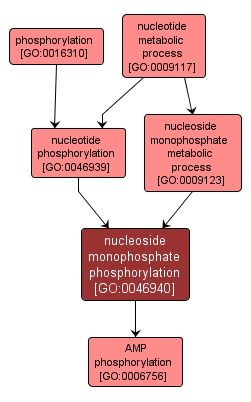GO TERM SUMMARY
|
| Name: |
nucleoside monophosphate phosphorylation |
| Acc: |
GO:0046940 |
| Aspect: |
Biological Process |
| Desc: |
The process of introducing one or more phosphate groups into a nucleoside monophosphate to produce a polyphosphorylated nucleoside. |
|

|
INTERACTIVE GO GRAPH
|














